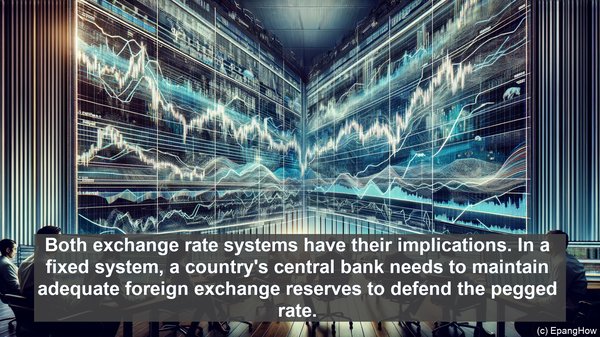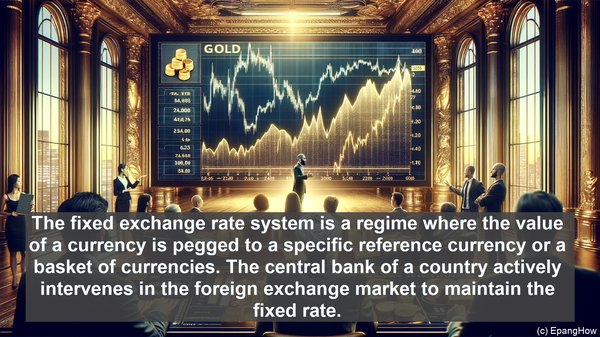Introduction: The Crucial Role of Exchange Rate Systems
Hello everyone! Welcome to our article on exchange rate systems. These systems serve as the backbone of international finance, determining the value of currencies in the global market. Today, we’ll focus on two primary systems – the fixed exchange rate and the managed float exchange rate. Let’s dive in!

Section 1: Understanding the Fixed Exchange Rate System
The fixed exchange rate system is a regime where the value of a currency is pegged to a specific reference currency or a basket of currencies. The central bank of a country actively intervenes in the foreign exchange market to maintain the fixed rate. This intervention often involves buying or selling its own currency. The goal is to ensure stability and predictability in international trade and investments.

Section 2: The Mechanisms of the Managed Float Exchange Rate System
In contrast, the managed float exchange rate system, also known as the dirty float, allows the currency’s value to fluctuate freely in the foreign exchange market. However, the central bank occasionally intervenes to influence the exchange rate. This intervention is typically done to prevent extreme volatility or to address economic imbalances. Unlike the fixed system, the managed float offers more flexibility and can reflect market forces to a greater extent.
Section 3: Factors Influencing the Choice of Exchange Rate System
The choice between the fixed and managed float systems depends on various factors. Economic stability, trade patterns, inflation rates, and capital mobility are some crucial considerations. For countries with small economies heavily dependent on international trade, a fixed system can provide stability. On the other hand, larger economies with more diverse economic activities often opt for a managed float to accommodate market dynamics.
Section 4: Implications for Global Economies
Both exchange rate systems have their implications. In a fixed system, a country’s central bank needs to maintain adequate foreign exchange reserves to defend the pegged rate. This can limit monetary policy flexibility. In a managed float system, the exchange rate can be influenced by market sentiment, leading to short-term volatility. However, it also allows for adjustments to external shocks. The choice of system can impact a country’s competitiveness, trade balance, and overall economic stability.
